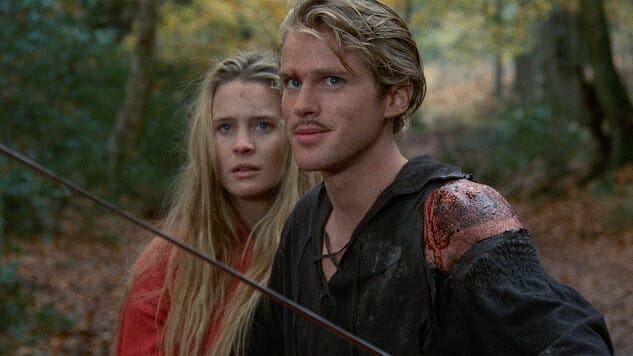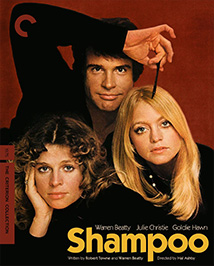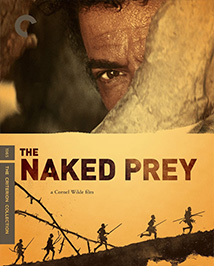Best of Criterion’s New Releases, October 2018

Each month, Paste brings you a look at the best new selections from the Criterion Collection. Much beloved by casual fans and cinephiles alike, Criterion has for over three decades presented special editions of important classic and contemporary films. You can explore the complete collection here. In the meantime, because chances are you may be looking for something to give the discerning (raises pinkie) cinephile this month, find all of our Criterion picks here, and check out some of our top titles this October:
 Shampoo
Shampoo
Year: 1975
Director: Hal Ashby
A screwball sex comedy made in the ’70s but based in the ’60s shouldn’t call to mind the politics of the 2010s. Shampoo, though, set in the shadow of Nixon’s presidential victory in 1968, can’t help but invite political reads—in part because of the backdrop, in part because of its totally accidental prescience. To hear George (Warren Beatty) speak aloud his uncontrollable lust for members of the fairer sex is to hear Donald Trump brag about kissing and groping and grabbing, as if acting on impulses too powerful to contain. “It makes me feel like I’m gonna live forever,” says George in one stammering confession. Unlike our current commander in chief, he’s at least honest: He’s addicted to love, or to sex, because by his own admission he may not love his many paramours all that much. He’s not after romance. He’s after the brief but exhilarating touch of immortality he gets from a single roll in the hay.
Fleet and funny as Shampoo is, and certainly it’s both of these, there are times when it reads like the spiritual cousin to Steve McQueen’s Shame, a film in which the subtext of sex addiction is made text. George is handsome, he’s successful, he’s a magnet for beautiful women, ranging from his girlfriend, Jill (Goldie Hawn), his lover, Felicia (Lee Grant), his ex, Jackie (Julie Christie), and even Felicia’s teenage daughter, Lorna (Carrie Fisher in her first film role). But he’s also miserable, and perhaps fucks his way through his misery, as if each orgasm given and taken allays, if only temporarily, fear of a future under Nixon and Agnew. Or maybe he really can’t help himself. Either way, Shampoo remains hilarious, provocative and, beneath it all, deeply, unbearably sad. —Andy Crump
 The Naked Prey
The Naked Prey
Year: 1965
Director: Cornel Wilde
Absolutely relentless, The Naked Prey sprints, staggers and creeps through its hostile dreamscape, simultaneously gritty, lacking all sense of cinematic romance, and a surreal, super-stylized hallucination of humanity on the verge of civilization. Handsome actor type turned fearless director, Cornel Wilde (as, only, “Man”) plays a rough-and-tumble survivalist assisting a decidedly bourgeois financier (Patrick Mynhardt) on his elephant-hunting safari through unspecified (“deepest”) Africa. The financier, of course, offends a local tribe, who attack the Man’s group, finding various creative ways the torture those in charge. Wilde never shies from the inherent grotesqueness of such violence, but his blood is a vibrant red, almost buzzing in its brightness, released in splashes and halos though never captured in graphic detail. Rather than exploit such action, Wilde seems to understand that the colonial backdrop fueling this nightmare means the native tribe has reason enough to want punishment, revenge. Lives. Saving the Man’s life while mutilating the others, the Man’s stripped and sent scrambling into the unknown wilderness, given a headstart before a small group of hunters set off after him. The pursuers underestimate the Man’s prowess: He quickly kills the first, gathering weapons and water in order to dispatch a few more, escape, dispatch a few more, then escape again. Repeat.
The Naked Prey isn’t exactly a pinnacle of wokeness, but it does treat its native tribal hunters as individual characters reacting to the ever-escalating difficulty of their hunt in various states of emotion, from sorrow and panic, to doubt and rage, their friends getting picked off one by one. Almost serving as lapses in the real time of Wilde’s chase film are interstitial sequences of wild animals tearing each other apart, battling for basic claims to existence, shot by landscape photographer and cinematographer Sven Persson. Around these verite pieces are long flurries of kinetic filmmaking, Wilde’s camera rarely static, though just as given to impressionistic spatial geography and intuitive action editing. As Wilde states in an interview included in the Criterion’s packaging for the special edition of the film, these glimpses of primal action buoy the already clear idea that the pain we incessantly inflict on one another devolves us back into animals, pushing us further and further backwards. “There really is not equality,” he says. “There’s not equality anywhere in the world.” Hurting one another becomes a simple given, a fact that’s never changed no matter what breadth of technology and civilization has fooled us into thinking we’ve left our prelapsarian ways behind us. In turn, Wilde ends his film on a gesture of equality, a glance of recognition between predator and prey—an ultimate point of rest, very little gained or accomplished. —Dom Sinacola
 The Princess Bride
The Princess Bride
Year: 1987
Director: Rob Reiner
Quite possibly the most perfectly executed transformation of a beloved book to a beloved film in the history of the sport. A family-friendly “kissing movie” with pitch-perfect performances by the entire cast—from main character to bit player—The Princess Bride is the most relentlessly quotable film anywhere this side of Monty Python and their Holy Grail. Though regarded warmly enough by critics, its status as comedic fable ensures it is criminally underrated on most lists. Inconceivable? Alas, no. But unfair, nonetheless. —Michael Burgin
 Sisters
Sisters
Year: 1973
Director: Brian De Palma
Brian De Palma’s obsession with emulating Hitchcock isn’t news—his early career especially lifts various elements from Hitch’s work then applies a healthy dose of art-house exploitation. Yet Sisters might be the only example in De Palma’s filmography that follows the structure of one of his idol’s classics—in this case Psycho—with religious precision. Forget the terrible Gus Van Sant shot-by-shot remake; De Palma manages to recreate the soul of Psycho while offering a completely different narrative. In other words, the groundbreaking moves of Psycho are all here: starting with one genre and switching to another halfway through; suddenly and violently killing off the person we thought was the protagonist; an innocent is plagued by their murderer relative; using the same twist as Psycho regarding that relative—even the final shot carries direct comparisons. De Palma’s use of Bernard Hermann, dominating the tension with the trademark bombastic string section, is the final string—pun intended—that ties the two legends together.
Yet, De Palma’s application of his own distinct style, the operatic use of split diopter shots and split screen sequences, create enough of a unique experience, somewhere between an homage to the past and a brave application of then modern techniques. The story of the meek model (Margot Kidder) and her murderous conjoined twin doesn’t offer many surprises, but the director’s execution, dripping with style and tension, turns Sisters into one of De Palma’s most memorable thrillers.
Criterion’s new HD transfer doesn’t scrub the film’s typical early ’70s’ exploitation grain, especially when it comes to the hauntingly bizarre 16mm dream sequences, it provides a clean and crisp video, the best you can get in home viewing. That’s the most solid reason to buy the Blu-ray if you own the previous Criterion DVD, since the only new extra is a new interview with co-star Jennifer Salt. —Oktay Ege Kozak
GET PASTE RIGHT IN YOUR INBOX
The best music, movies, TV, books, comedy and more.